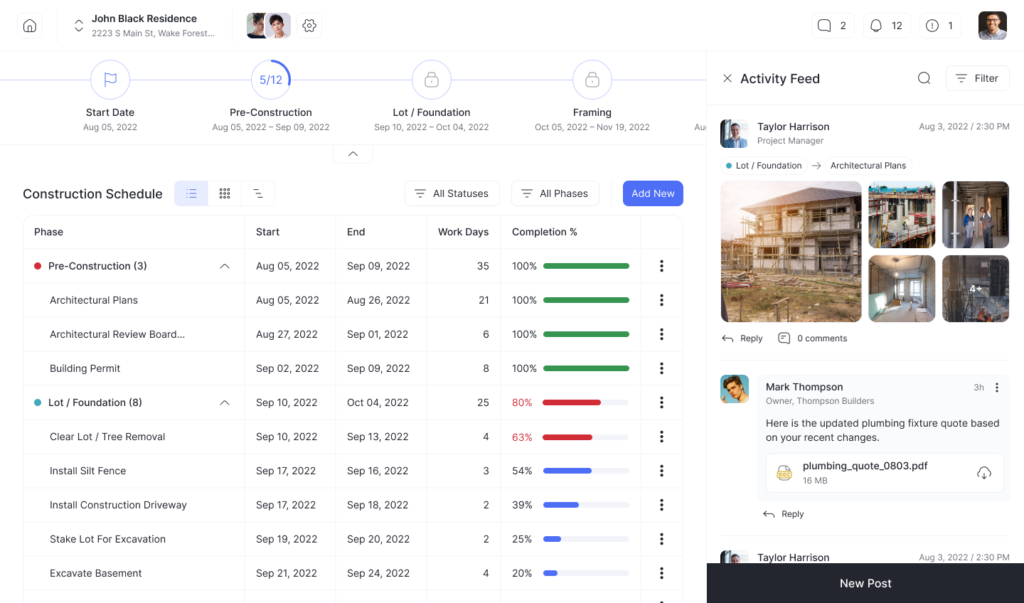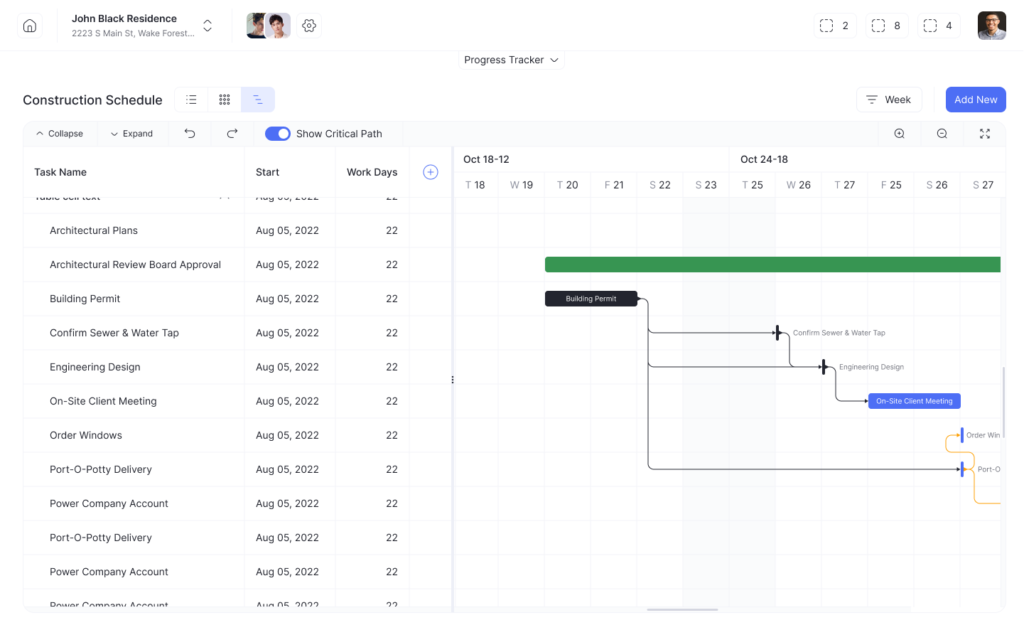In construction, change orders are often an inevitable part of the process.
These modifications to the original contract or plan can arise for various reasons, making them a focal point for builders, contractors, and clients alike.
This article goes into the intricacies of change orders, their significance, the common types of changes encountered, and the innovative ways software solutions like BuilderPad can make their management simpler.
What is a change order?

A change order is an official document detailing any modifications to the initial contract terms, specifications, or construction plans. Reasons for such changes might encompass unexpected site conditions, client-driven requests, overlooked details in the preliminary plan, or other unforeseen factors.
Change orders, although common in the construction industry, can have cascading impacts on various facets of a project. Beyond the primary adjustments to scope, cost, or schedule, they can influence multiple stakeholders and processes integral to construction:
1. Disruption in Work Flow
When a change order is initiated, it can disrupt the current sequence of activities. Tasks might need to be halted, postponed, or even reversed to accommodate the change.
2. Impact on Subcontractors

Subcontractors can be significantly impacted by change orders:
- Rework: They might have to redo some of their completed tasks.
- Rescheduling: Subcontractors might need to reschedule their tasks, which can affect other projects they’re involved in.
- Cost implications: Any change can also mean increased costs for subcontractors, which needs to be negotiated and covered.
3. Procurement Delays
Material orders might need to be modified, postponed, or canceled. This can lead to renegotiating with suppliers or even paying penalties for late cancellations.
4. Permit and Inspection Issues
If the changes are significant, it might require re-application for certain permits or getting re-inspected, leading to potential delays.
5. Financial Implications
Beyond the direct costs associated with the change, there can be indirect costs:
- Administrative: Costs related to documenting the change, communicating with stakeholders, and other overheads.
- Operational: Delays can mean extended equipment rentals, labor costs, or site overheads.
6. Design Revisions
Significant changes might require modifications in design documents, which would mean more work for architects and designers.
7. Quality Implications
Hasty changes can sometimes result in compromised work quality. Without proper planning, the end product might not be up to the standards expected.
8. Client Relations

Continuous change orders can strain the relationship between contractors and clients. While some changes are unavoidable, a project that constantly shifts can cause frustration and decrease trust.
9. Impact on Labor
Repeated changes can affect worker morale and productivity. It’s challenging for teams to continually adapt to moving targets, and it can be demotivating if they feel their hard work gets undone.
10. Timeline Extensions
Almost all change orders will result in some extension of the project timeline. This not only impacts the current project but can also have cascading effects on other projects that the contractor or subcontractors have lined up.
11. Safety Concerns
Frequent changes can sometimes overlook safety protocols, leading to increased risks on site.
12. Legal Implications
Especially if the change orders aren’t properly documented or if there are disputes about who bears the additional costs, it can lead to legal complications.
13. Stakeholder Communication
Change orders necessitate increased communication with all stakeholders to ensure everyone is on the same page. This can mean more meetings, documentation, and discussions.
In essence, while change orders are an inherent part of construction projects, they undeniably ripple through multiple layers of the construction process. Effective management, clear communication, and tools that streamline change order processing can significantly mitigate their potential negative impacts.
Types of changes in construction

Throughout the construction journey, different types of changes may arise, necessitating the formulation of a change order:
- Design changes: Alterations linked to architectural or engineering perspectives.
- Site conditions: Discrepancies between the actual site conditions and initial expectations.
- Material changes: Modifications in material types or quality.
- Scope changes: Adjustments to the project’s breadth or scale.
- Regulatory changes: Updates or changes in local laws, building codes, or environmental regulations.
- Error corrections: Corrections needed due to mistakes or misinterpretations in the original plans.
- Safety concerns: Changes made to address potential safety hazards recognized during the construction phase.
Why are change orders important?
Understanding the importance of change orders offers clarity in managing project alterations. Here are the primary reasons they hold significance:
- Documented record: Providing a clear, written account of all post-contract changes.
- Cost management: Equipping stakeholders with the ability to adjust project finances according to changes.
- Time adjustments: Allowing for modifications to the overall project timeline based on the changes implemented.
How do change orders work?
Navigating the change order process involves several crucial steps. Here’s a breakdown of how they typically function:
- Initiation: The inception of a potential change, identified by either the owner, architect, or contractor.
- Documentation: Recording the proposed change via a formalized change order form.
- Review & approval: Stakeholders collaboratively assess the feasibility and implications of the change order, leading to its approval or revision.
- Implementation: Post-approval, the construction team incorporates the changes as documented.
- Adjustments: Finalizing the changes by modifying the original contract to reflect the newly agreed-upon terms.
How can BuilderPad help?
Navigating change orders can be intricate, but BuilderPad, a construction management software, is tailored to simplify this aspect:
Real-time collaboration:
Enable stakeholders to collaboratively review, discuss, and sanction change orders swiftly.

Timeline analysis:
Get a clear understanding how changes impact timeline and progress completion. Keep the client, subcontractors and co-workers updated on everything that is going on.

Record keeping:
Archive all change orders, ensuring easy access and future reference.
Construction Change Orders: Q&A
Q: How do you prevent unnecessary change orders?
A: Proactive planning, meticulous site surveys, and continuous dialogue can diminish avoidable change orders. Platforms like BuilderPad also offer early detection of potential discrepancies.
Q: Are all change orders billable to the client?
A: It varies. While contractor-induced changes might be absorbed by the contractor, client-initiated changes usually translate to additional costs for the client.
Q: How can one ensure that change orders don’t derail the project timeline?
A: Leveraging efficient tools like BuilderPad can proactively manage resources and tasks, ensuring that the project remains on schedule.
Q: Can clients decline a change order?
A: Absolutely. Especially if they perceive it as unnecessary or if it goes beyond their budget. Therefore, maintaining transparent communication is pivotal to mutual comprehension.
To conclude, while change orders remain a routine component in construction, with modern tools like BuilderPad, overseeing them becomes infinitely more organized and effective.







